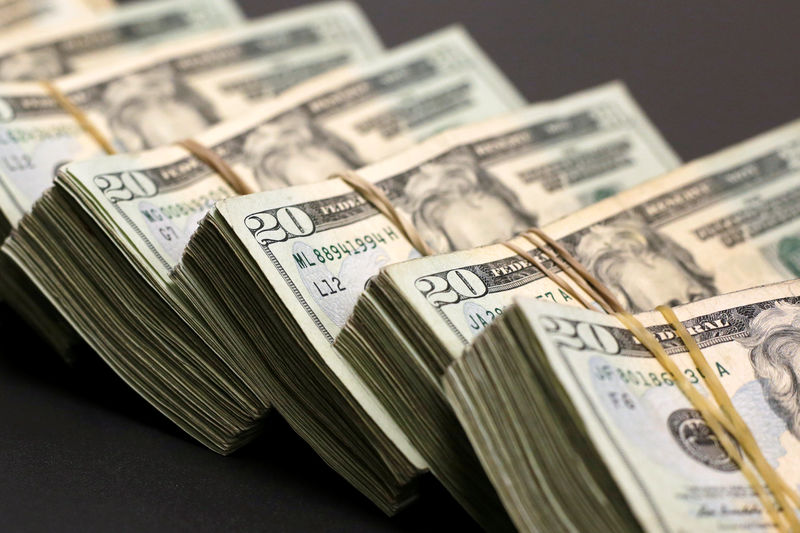TSX gains after CPI shows US inflation rose 3%
Investing.com - The U.S. dollar edged higher Tuesday, but remained not far above its recent three-year low after President Donald Trump criticized Federal Reserve Chairman Jerome Powell, threatening the independence of the U.S. central bank.
At 04:45 ET (08:45 GMT), the Dollar Index, which tracks the greenback against a basket of six other currencies, gained 0.2% to 98.190, after sinking to levels last seen in March 2022 during the previous session.
Fed independence under threat?
The dollar has struggled since Trump started a trade war, levying tariffs on imports from a number of trading partners, eroding investor confidence in the U.S. economy and the concept of American exceptionalism.
The greenback has taken a further hit as the president attacked Powell for not cutting rates as speedily as Trump would like, indicating that he wanted to replace the Fed head.
Trump’s onslaught comes after Powell last week said the central bank can afford to be patient in judging how to set policy, and that rates should not be lowered until it is clearer that U.S. tariffs won’t stoke persistently higher inflation.
“President Trump is intensifying pressure on Federal Reserve Chair Jerome Powell to cut rates ‘now’, threatening one of the foundations of the dollar’s appeal as a global reserve currency: an independent and inflation-responsible central bank,” said analysts at ING, in a note.
“At the same time, many are speculating that Trump is looking to blame the Fed for the upcoming economic slowdown, which is a de facto admission by the administration that it is sharing the market’s recessionary fears.”
Euro nears three-year high
In Europe, EUR/USD traded 0.1% lower to 1.1500, with the single currency slipping slightly after rising to an over three-year high against the dollar in the previous session.
The euro is gaining even after the European Central Bank announced a 25-basis-point cut late last week, attempting to support a struggling economy that also faces a hefty hit from U.S. tariffs.
“It is evident that the euro’s fundamental impact on another significant EUR/USD rally would be minimal, as it would primarily benefit from liquidity-seeking flows departing USD assets due to its reserve value,” said ING.
“In other words, a move to 1.20 would be driven entirely by USD factors.”
GBP/USD edged higher to 1.3375, after surging to a peak of 1.3421 for the first time since September to start the week.
The Bank of England held interest rates at 4.5% at its meeting in March, helping support the currency, but the recent softer-than-expected inflation reading raised the possibility of a rate cut in May.
Yen nears key psychological level
In Asia, USD/JPY traded 0.2% lower to 140.51, after earlier touching the key psychological 140 level for the first time since mid-September.
“The yen is the biggest winner in this latest round of USD selling, as it responds to both the equity slump and the risks of the Fed’s independence,” ING added.
“USD/JPY has dropped below the 140.0 mark and given the broad attractiveness of the yen as a safe-haven substitute, we don’t see the conditions for an immediate reversal of the move.”
USD/CNY traded 0.3% higher to 7.3138, despite the People’s Bank of China setting the yuan’s daily midpoint significantly stronger than expected on Monday, signaling its intent to stabilize the currency amid growing economic uncertainty.
China on Monday issued a stern warning to nations contemplating trade agreements with the U.S. that could undermine Chinese interests.
The Chinese Ministry of Commerce accused Washington of employing tariffs and monetary sanctions to coerce countries into limiting their trade with China.
This warning comes amid escalating tensions in the ongoing Sino-U.S. trade conflict, which has seen the U.S. impose tariffs of up to 145% on Chinese goods, leading to retaliatory duties from China.
